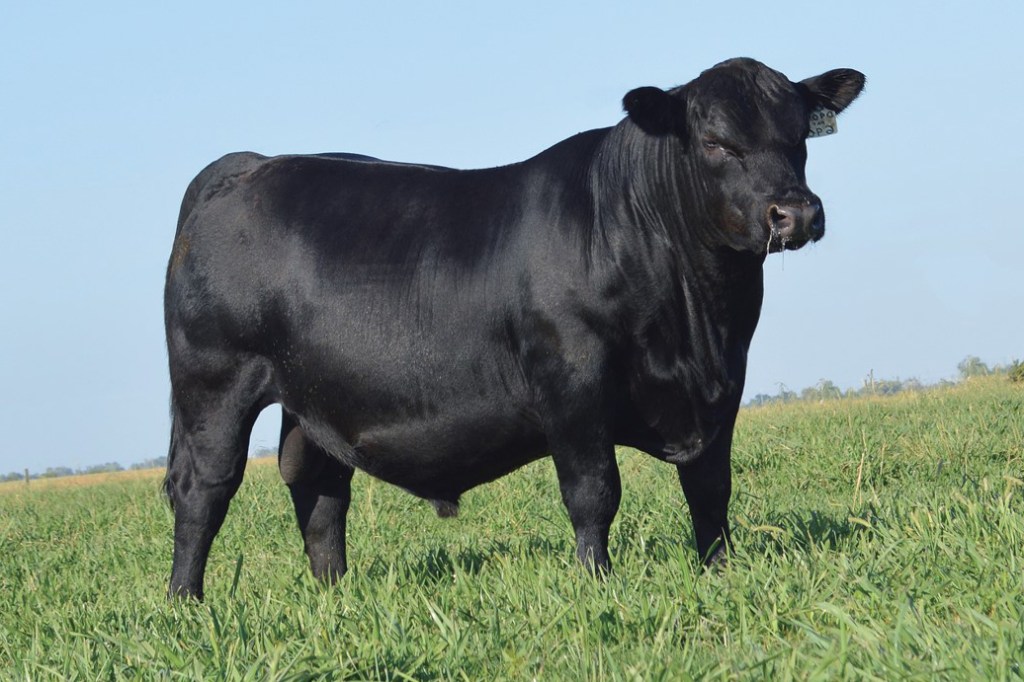ABS Genetic Defect Information
TH is a disorder of multiple congenital defects seen in calves. Translated, the name refers to absence of all or part of the tibia (tibia = the bone between the knee and ankle in humans or the stifle and hock in cattle and hemimelia = absence of all or part of a limb). But TH encompasses more defects that the name implies. TH is lethal, as the calf may be born dead, but if not dead the condition is incompatible with life. These valves have large abdominal hernias (weakening of the abdominal muscles that allows intestinal contents to bulge out), twisted legs sometimes with absent or deformed bones. They may be cryptorchid (undescended testicles), have meningocele (defect in the skull with tissue coming out) and a long shaggy hair coat.
[READ: Genetic Assessment]
TH was first described in Galloway cattle in the 1960’s and in Shorthorn cattle in 2000. Since that time hundreds of calves with TH have been identified. Studying the pedigrees of affected and unaffected cattle has lead to the conclusion that TH is a recessive disorder. For the calf to be effected, it must have inherited the defective gene from both parents.
There is a DNA test for TH, Carriers are listed on both the Shorthorn and Maine Anjou websites.
PHA (pulmonary hypoplasia with anasarca). Translated, that means little, poorly formed lungs (pulmonary hypoplasia) and lots of excess, retained fluid (anasarca). This is also a lethal defect and the calves are usually born dead. Calves may also be aborted early. The anasarca is a major problem. Calves can retain so much fluid that an 80 pound calf can weigh 200 pounds. PHA often causes dystocia and may require a C-section.
In PHA, like TH, the defective gene is recessive, meaing both parents appear normal (phenotype) but both parents carry defective recessive gene (genotype). If you have a cow that has a PHA calf, you know both the sire and the dam are carriers of the defective genes.
AM (Arthrogryposis Multiplex) – is a recessive mutation on a single chromosone. Cattle that are homozygous for the mutated gene are born dead or die shortly after birth. The spine and legs appear crooked or twisted and the joints of the legs are often fixed in position. Front legs are contracted and rear limbs may be contracted or extended. Calves are small and appear thin due to limited muscle development. There may be a cleft affecting the nose or palate. For more information and to view animals tested, pleae visit the American Angus Association page listed below.
CA (Contractural Arachnodactyly) – is caused by a recessive mutation on a single cattle chromosome. Cattle that are homozygous for the mutated gene will exhibit the CA phenotype. CA Calves are normally born alive and most can walk, suckle and survive. Birth weights of CA calves are normal. Contractures which reduce the range of angular movement of the upper limb joints are present at birth in CA but are much less severe, without rigid joint contractures. Due to these contractures, CA Calves at birth assume an abnormal crouched posture, resembling an elk or deer fawn, with the feet placed more to the rear than normal, hocks pulled up and back and the spine slightly arched. For more information and to view animals tested, please visit the American Angus Association page listed below.
D2 (PRKG2) Gene Mutation for Dwarfism is caused by a recessive mutation on a single cattle chromosome. Cattle that are homozygous for the mutated gene will exhibit D2 (Dwarfism). D2 was recgnized as a specific strain of dwarfism. There are several types of dwarfism, but all dwarfs shorter and some smaller than normal. The legs are short and body is short, and the animal may appear to have a potbelly and a thick or blocky shape. The head may be normal (long nosed or long-headed dwarf) or the face may appear shortened. Muscling is often normal, thus calves may have a thick appearance. For more information and to view animals tested, please visit the Amercan Angus Association page listed below.
M1 (Myostatin nt821Gene Deletion) is caused by a recessive mutation on a single cattle chromosome. Cattle that are homozygous for the mutated gene will exhibit double muscling (M1). M1 was recognized as a strain of double muscling by the American Angus Association on June 20, 2011. Animals are extremely heavy muscled in appearance, including abnormally large, wide and rounded rump and thighs with prominent creases between muscle groups. There is usually little covering fat, and bones are thin. For more information and to view animals tested, please visit the American Angus Association page listed below.
NH (Neuropathic hydrocephalus) is caused by a recessive mutation on a single cattle chromosome. Cattle that are homozygous for the mutated gene will exhibit NH. Calves that are carried are born near term and may have 25-35 pound birth weights. Some evidence also points toward possible early abortions due to the defect. The cranium is markedly enlarged (volleyball to basketball sized). The bones of the skull are malformed and appear as loosely organized bony plates that fall apart when the cavity is opened. The cranial cavity is filled with fluid and no recognizable brain tissue is evident. The spinal canal is also dilated and no observable spine tissue is found. For more information and to view animals tested, please visit the American Angus Association page listed below.






